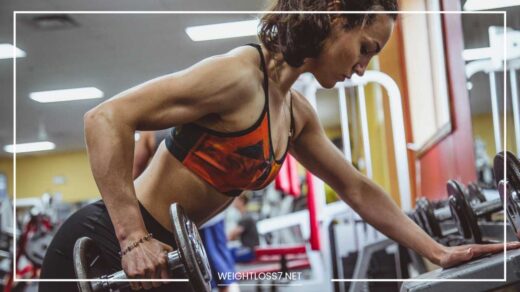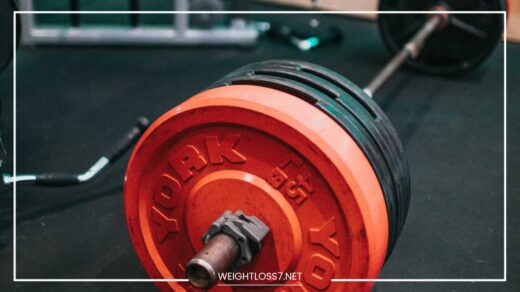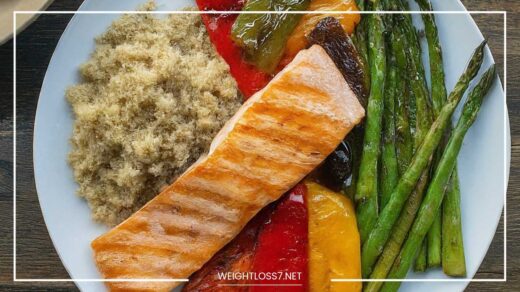How to Reduce Face Fat

Reduce Face Fat
How to Reduce Face Fat: A Comprehensive Guide to a Sculpted Look
The human face is a canvas of expression, conveying emotions and shaping first impressions. A desire for a slimmer, more defined jawline is a common aesthetic goal, and while genetics play a role in facial structure, there are effective strategies you can take to reduce facial fat and achieve a sharper appearance.
This comprehensive guide explores not only lifestyle changes but also delves into facial exercises, cosmetic procedures, and additional considerations for a holistic approach to a sculpted look.
Understanding Facial Fat Distribution
Facial fat distribution varies significantly from person to person, influenced by factors like:
- Age: As we age, collagen production slows down, leading to sagging skin and a loss of facial volume. However, fat deposits can also accumulate in certain areas, particularly around the cheeks and jowls.
- Sex: Men tend to store more fat around the jawline and neck, while women tend to store more fat in the cheeks and under the chin.
- Genetics: Facial structure and fat distribution are heavily influenced by genetics. Some people naturally have a rounder face shape, while others have a more defined jawline.
Fat cells accumulate in various areas of the face, including:
- Cheeks: The cheeks are a common area for facial fat storage, contributing to a fuller appearance.
- Jowls: Jowls are the sagging skin and fat deposits that develop along the jawline with age.
- Under the Chin: Submental fat, also known as a “double chin,” can be a stubborn area for fat accumulation.
Holistic Strategies for a Slimmer Face
Significant facial fat reduction often requires a multi-pronged approach that addresses overall health and body composition. Here’s a breakdown of key strategies:
-
Dietary Tweaks for a Sculpted Face:
- Focus on Whole Foods: Prioritize whole, unprocessed foods like fruits, vegetables, and lean proteins. These foods are packed with nutrients that keep you feeling full and energized, reducing cravings for sugary snacks and unhealthy fats that can contribute to weight gain and facial puffiness.
- Limit Refined Carbs and Sugars: Refined carbohydrates and sugary drinks are quickly broken down by the body, leading to blood sugar spikes and crashes. These crashes can trigger cravings for more sugar and contribute to fat storage, including in the face. Opt for complex carbohydrates like whole grains and legumes, which provide sustained energy and promote satiety.
- Healthy Fats are Your Friends: Don’t shy away from healthy fats like those found in avocados, nuts, seeds, and olive oil. These fats are essential for hormone regulation, cell function, and keeping you feeling satisfied. They can also help with nutrient absorption of fat-soluble vitamins A, D, E, and K.
-
Creating a Calorie Deficit for Fat Loss: To lose weight, including facial fat, your body needs to burn more calories than it consumes. Here’s how to achieve this:
- Track Your Calorie Intake: Use a calorie-tracking app or journal to monitor your daily food intake. Understanding your baseline calorie consumption is crucial for creating a deficit.
- Increase Physical Activity: Exercise burns calories and helps you reach a calorie deficit. Aim for a combination of cardio and strength training for optimal results.
- Consult a Healthcare Professional: A doctor or registered dietitian can help you determine a safe and sustainable calorie deficit based on your individual needs and goals.
-
Exercise is Key: Regular physical activity is a cornerstone for overall health and facial sculpting. Here’s a breakdown of different exercise types and their benefits:
- Cardio: Aim for at least 150 minutes of moderate-intensity cardio or 75 minutes of vigorous-intensity cardio per week. Activities like brisk walking, running, swimming, cycling, and dancing are great options. Cardio helps burn calories and promotes overall weight loss, which can contribute to a slimmer face.
- Strength Training: Building muscle mass increases your basal metabolic rate (BMR), the number of calories your body burns at rest. This means you’ll burn more calories throughout the day, even when you’re not actively exercising. Include exercises that target major muscle groups like legs, back, chest, and core. Strength training can also help improve facial definition by toning underlying muscles.
-
Hydration is Essential: Drinking plenty of water is crucial for optimal health and can even help reduce facial puffiness caused by water retention. Aim for eight glasses of water daily, adjusting based on your activity level and climate. Proper hydration flushes toxins from your body, improves skin health, and keeps you feeling energized.
-
Minimize Sodium Intake: Excess sodium can contribute to water retention and facial bloating. Limit processed foods, restaurant meals, and salty snacks, which are often loaded with sodium. Opt for fresh ingredients and cook at home more often to control sodium content. When reading food labels, pay attention to the sodium content per serving and choose options lower in sodium.
-
Prioritize Quality Sleep: When you’re sleep-deprived, your body produces more cortisol, a stress hormone that can lead to weight gain and increased facial fat storage. Aim for 7-8 hours of quality sleep each night. Establishing a regular sleep schedule and creating a relaxing bedtime routine can significantly improve your sleep quality.
-
Manage Stress Levels: Chronic stress can also elevate cortisol levels, potentially leading to facial fat storage. Practice relaxation techniques like yoga, meditation, or deep breathing to manage stress effectively. Engaging in activities you enjoy, spending time in nature, and connecting with loved ones can also help reduce stress levels.
Facial Exercises: Fact or Fiction?
While research on the effectiveness of facial exercises for reducing fat is limited, some studies suggest they may improve muscle tone and definition, potentially leading to a slimmer appearance.
Facial exercises are generally safe and easy to incorporate into your daily routine. However, consistent practice is key, and results may be subtle.
Here are some examples of facial exercises you can try:
- Cheek Puffer: Puff out your cheeks for a few seconds, then release. Repeat 10-15 times.
- Fish Face: Suck in your cheeks and hold for a few seconds, then relax. Repeat 10-15 times.
- Chin Lift: Tilt your head back slightly, looking towards the ceiling. Push your lower lip down towards your chin and hold for a few seconds, then relax. Repeat 10-15 times.
- Jaw Jut: Clench your jaw by pushing your lower jaw forward and holding for a few seconds, then relax. Repeat 10-15 times.
Important Considerations
- Spot Reduction Myth: It’s important to understand that you cannot target fat loss in specific areas like the face. By incorporating healthy lifestyle changes and exercise, you’ll promote overall weight loss, which will likely contribute to a slimmer face as well.
- Genetics: Genetics play a role in facial structure and fat distribution. While some people naturally have a rounder face shape, the strategies mentioned above can still help refine contours and create a more defined appearance.
- Slow and Steady Wins the Race: Aim for gradual, sustainable weight loss. Crash diets and extreme exercise routines are not only unhealthy but also difficult to maintain in the long term. Focus on long-term lifestyle changes for lasting results.
- Consulting a Healthcare Professional: If you have concerns about your weight or facial appearance, consult a doctor or registered dietitian. They can provide personalized advice and ensure your weight loss goals are safe and achievable.
Beyond Lifestyle: Exploring Cosmetic Procedures
For some individuals, cosmetic procedures may offer a more dramatic solution for reducing facial fat. However, these procedures are often expensive, carry potential risks, and require consultation with a qualified healthcare professional. Here are some common options:
- Liposuction: This surgical procedure involves using a cannula to suction out fat deposits from targeted areas, including the face. Liposuction for the face is a delicate procedure and should only be performed by a board-certified dermatologist or plastic surgeon.
- Kybella: This injectable treatment uses deoxycholic acid to dissolve fat cells under the chin, reducing the appearance of a double chin. Kybella requires multiple treatment sessions and may cause side effects like swelling, bruising, and numbness.
- Botox: While not directly for fat reduction, Botox injections can relax muscles that contribute to wrinkles and sagging skin, creating a smoother and potentially slimmer appearance in the lower face. However, Botox is a temporary solution and requires repeat treatments.
Choosing the Right Approach
The best approach for reducing facial fat depends on your individual goals, preferences, and budget. Lifestyle changes and facial exercises are a safe and natural starting point.
If you’re looking for more dramatic results, consulting with a healthcare professional about cosmetic procedures can be helpful.
Remember, prioritize your overall health and well-being, and choose options that align with your comfort level and realistic expectations.
Additional Tips for a Sculpted Look
- Hairstyle: The right hairstyle can significantly impact your facial shape. Consider a haircut that complements your face shape and draws attention to your jawline.
- Makeup: Makeup techniques like contouring can create the illusion of a slimmer face. Highlighting your cheekbones and jawline while shading areas you want to appear receded can create a more defined look.
- Good Posture: Maintaining good posture keeps your head held high and elongates your neck, contributing to a more sculpted appearance.
Reducing facial fat requires a multi-faceted approach that prioritizes overall health and well-being. By incorporating healthy lifestyle changes like a balanced diet, regular exercise, and adequate sleep, you can promote weight loss and a slimmer appearance, including your face.
Facial exercises may offer some additional toning benefits, while cosmetic procedures can provide more dramatic results but come with their own considerations.
Remember, the journey to a sculpted look is a process. Be patient with yourself, celebrate your progress, and prioritize healthy habits for sustainable results. Here are some final thoughts to keep in mind:
- Focus on progress, not perfection: Aim for gradual, sustainable changes you can maintain in the long term. Don’t get discouraged by setbacks; view them as learning opportunities and recommit to your goals.
- Love the skin you’re in: While working towards a sculpted look, appreciate your unique features. Self-love and acceptance are essential for true beauty.
- Consult a professional: If you have any concerns about weight loss, facial fat, or cosmetic procedures, consult a doctor or registered dietitian. They can provide personalized guidance and ensure your approach aligns with your health and goals.
By adopting a holistic approach that combines healthy habits with self-care and realistic expectations, you can achieve a sculpted look that reflects your inner radiance.

















